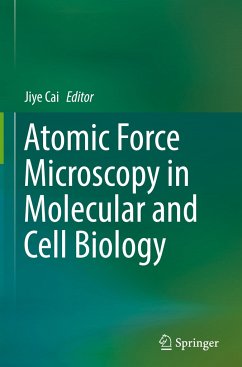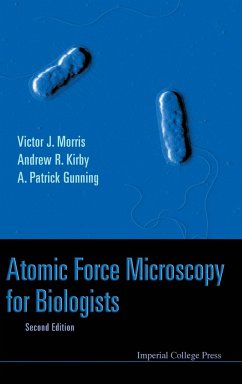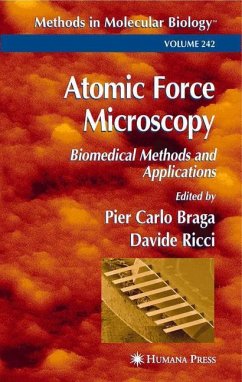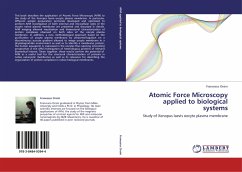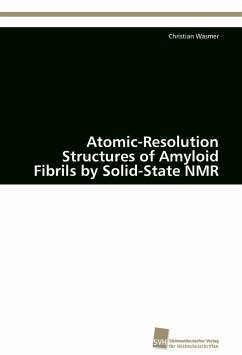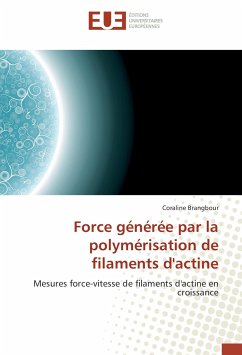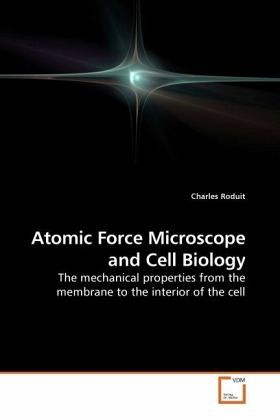
Atomic Force Microscope and Cell Biology
The mechanical properties from the membrane to the interior of the cell
Versandkostenfrei!
Versandfertig in 6-10 Tagen
32,99 €
inkl. MwSt.

PAYBACK Punkte
16 °P sammeln!
This book describes the doctoral thesis where we explore the mechanical properties of living cells using the Atomic Force Microscope (AFM). The cell membrane contains lipids microdomains, called rafts, enriched in cholesterol and sphingolipids. The lipid rafts are believed to play an important role in signal processing by acting as a signaling platform . The mechanical properties of these rafts were characterized by targeting one of its component, the GPI-anchored protein. This work revealed these domains to be stiffer than the surrounding membrane. The stiffness specificity of rafts may be re...
This book describes the doctoral thesis where we explore the mechanical properties of living cells using the Atomic Force Microscope (AFM). The cell membrane contains lipids microdomains, called rafts, enriched in cholesterol and sphingolipids. The lipid rafts are believed to play an important role in signal processing by acting as a signaling platform . The mechanical properties of these rafts were characterized by targeting one of its component, the GPI-anchored protein. This work revealed these domains to be stiffer than the surrounding membrane. The stiffness specificity of rafts may be related to the lower diffusion rate of proteins and can be, therefore, an important property for its role as a signaling platform. During this thesis, we also introduced a new AFM imaging mode, which we called stiffness tomography . With this imaging mode, we were able to distinguish stiff materials inclusion located into the sample. A significant part of this project was the development of a post-processing software to automate the computations of the acquired data. In this book we describes the algorithms used in the open-source version of this software.



